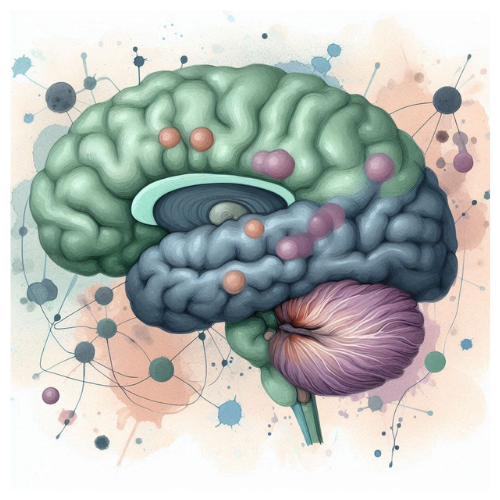Reward Circuit
The reward circuit in the brain relies on dopamine. Neurons in the ventral tegmental area (VTA) release dopamine, which activates downstream targets. Two critical pathways are involved: the mesolimbic pathway connecting the VTA to the nucleus accumbens (ventral striatum) and the mesocortical pathway connecting the VTA with the prefrontal cortex
Here’s how it works:
Reward Prediction Error: Dopamine neurons fire when there’s a difference between expected and actual rewards. If something positive happens unexpectedly (e.g., winning a game), dopamine spikes. Conversely, if an expected reward doesn’t occur, dopamine levels drop.
Motivation and Pursuit: Dopamine motivates us to seek rewards. It encourages goal-directed behavior, whether it’s pursuing a promotion, finishing a project, or even seeking social approval.
Task Initiation: Dopamine helps initiate tasks. When we anticipate a reward (e.g., a tasty meal), dopamine activation prompts us to start the activity (cooking, ordering food, etc.).
Attention and Focus: Dopamine enhances attention and focus. It helps us concentrate on tasks related to our goals.
Individual Differences: People vary in their dopamine sensitivity. Some are more sensitive to rewards, while others need larger rewards to activate dopamine pathways.
Remember, dopamine isn’t just about pleasure; it’s about anticipation and motivation.
Attention is the way social primates measure status. It is highly rewarding because it causes the release of brain chemicals such as dopamine and endorphins.





